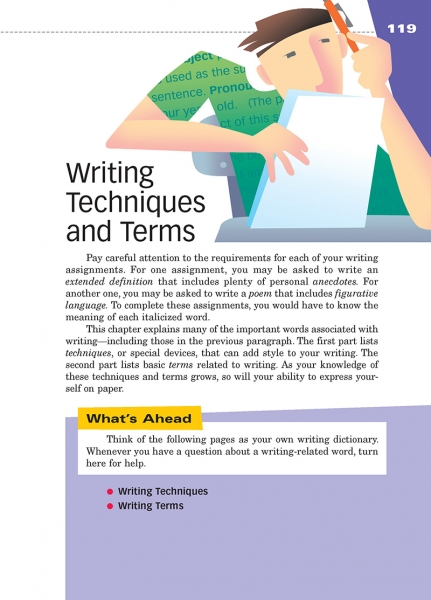Page 119 from

Start-Up Activity
-
Ask students who likes to dive. Ask what tricks they can do: swan dive, jack-knife, flip, one-and-a-half, gainer. . . .
-
Ask students who likes to skateboard. Ask what tricks they can do: kickflip, nollie heelswitch, switch kickflip. . . .
-
Ask students who likes magic. Ask what tricks they can do: guess your card, find something in your ear, pull a rabbit from a hat. . . .
When we get really good at something, we learn the tricks of the trade. We learn the interesting, impressive things we can do to have a big effect. This chapter focuses on the tricks of writing, techniques used by everyone from Shakespeare to J. K. Rowling.
Think About It
“Magicians will always tell you the trick is the most important thing, but I'm more interested in telling a story.”
—Marco Tempest

Start-Up Activity
-
Ask students who likes to dive. Ask what tricks they can do: swan dive, jack-knife, flip, one-and-a-half, gainer. . . .
-
Ask students who likes to skateboard. Ask what tricks they can do: kickflip, nollie heelswitch, switch kickflip. . . .
-
Ask students who likes magic. Ask what tricks they can do: guess your card, find something in your ear, pull a rabbit from a hat. . . .
When we get really good at something, we learn the tricks of the trade. We learn the interesting, impressive things we can do to have a big effect. This chapter focuses on the tricks of writing, techniques used by everyone from Shakespeare to J. K. Rowling.
Think About It
“Magicians will always tell you the trick is the most important thing, but I'm more interested in telling a story.”
—Marco Tempest